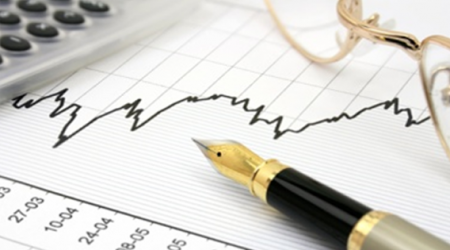

1) GDP
After several years of continued decline, the Syrian economy achieved a growth of 1.4% and 2.8% in the years 2018 and 2019, respectively, driven by a relative improvement in the security situation and the resumption of agricultural and industrial production. However, growth dropped again in 2020 by about 7.6% due to several shocks. The first was the banking sector crisis in Lebanon in the fourth quarter of 2019, the second was the arrival of the covid-19 pandemic in the first quarter of 2020 and the third was The Caesar Syria Civilian Protection Act, which came into effect in June 2020. These shocks led to a severe shortage of oil, electricity, and other essential products in the market causing deep bottlenecks and a severe drop in GDP.
Source: UNESCWA
2) The Exchange Rate
The events of late 2019 and 2020 heavily affected the exchange rate of the currency. The Syrian pound lost more than 210% of its value in the black market in 2020, trading at the rate of SYP 3,200 to one US dollar at the end of June 2020. The Central Bank reacted by tightening legal penalties for dealing in foreign currencies which improved the rate to SYP 2,850 by the end of the year.
3) Price Levels
The sharp decline in the value of the Syrian currency, together with local monopolies and shortage of goods in the market, led to the rapid increase of prices. Official estimates show an increase of 180% - 200% in the annual inflation rate during the year 2020, compared to the year 2019. Estimates of the Syrian Consulting Bureau (SCB) indicate an increase of about 127% in the cost of living for middle-income families in the Damascus area at the end of 2020.
4) Foreign Trade
The Syrian trade balance improved in 2020. Imports value decreased from Euros 5.2 billion in 2019 to about Euros 4 billion in 2020. This decline can be explained by the governmental rationalization measures, the tightening of sanctions imposed on Syria, and the banking crisis in Lebanon, which limited Syria’s imports. Exports, on the other hand, improved some during the year 2020, reaching almost one billion Euros compared to Euros 523 million in 2019.
Source: Ministry of Economy and Foreign Trade
5) Public Finance
The state budget for the year 2020 showed SYP 4,000 billion, distributed between 62% for current expenditures and 38% for investment expenditures, resulting in a financial deficit of SYP 1,455 billion. This is an increase of SYP 510 billion, compared to the deficit in the 2019 budget. There is no actual data yet on fiscal revenues and expenditures in the year 2020. This will take several years to be published.
For the year 2021, the state budget showed total expenditures of SYP 8,500 billion with SYP 7,000 billion for current expenditures (82.35%), and SYP 1,500 billion for investment expenditures (17.65%). Public revenues were estimated at SYP 6,016 billion distributed as SYP 3,507 billion for current revenues and SYP 2,509 billion as investment revenues. The total deficit for the 2021 budget was estimated at SYP 2,484 billion, 80% of which will be funded through the reserve and the rest through the issuance of government treasury bills.
Estimated Government Budgets 2017-2021
|
Budget Items |
2017 |
2018 |
2019 |
2020 |
2021 |
| 1. General Revenues |
1,918 |
2,378 |
2,937 |
2,545 |
6,016 |
|
Current Revenues |
1,100 |
1,540 |
1,881 |
1,430 |
3,507 |
|
Investment Revenues |
818 |
838 |
1,055 |
1,114 |
2,509 |
| 2. Expenditures |
2,660 |
3,187 |
3,882 |
4,000 |
8,500 |
|
Current Expenditures |
1,982 |
2,362 |
2,782 |
2,700 |
7,000 |
|
Investment Expenditures |
678 |
825 |
1,100 |
1,300 |
1,500 |
| 3. Budget Deficit |
742 |
809 |
945 |
1,455 |
2,484 |
By Lana Al-Halabi and Mohamad Al-Laham
May 03, 2021